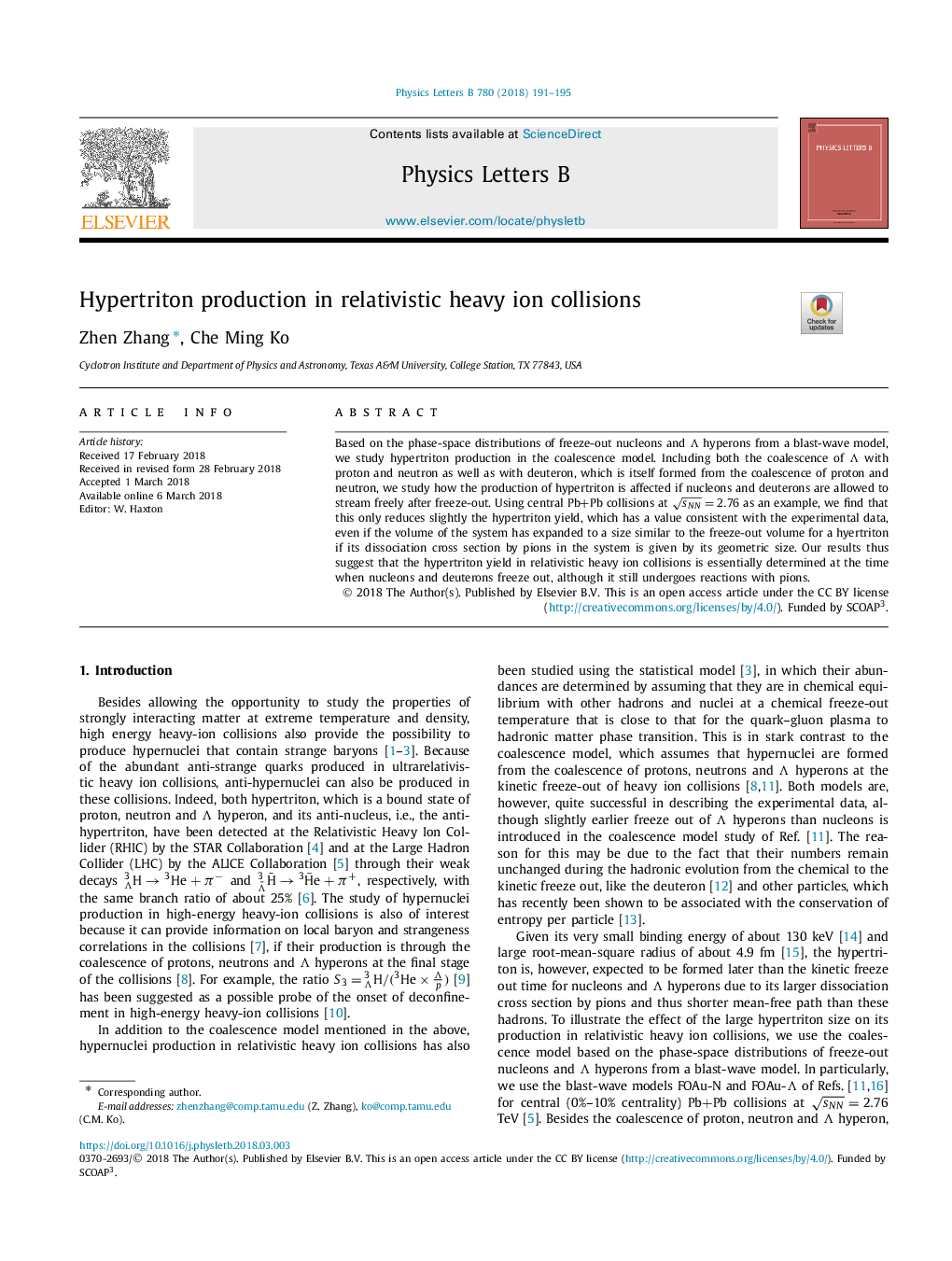| Article ID | Journal | Published Year | Pages | File Type |
|---|---|---|---|---|
| 8186872 | Physics Letters B | 2018 | 5 Pages |
Abstract
Based on the phase-space distributions of freeze-out nucleons and Î hyperons from a blast-wave model, we study hypertriton production in the coalescence model. Including both the coalescence of Î with proton and neutron as well as with deuteron, which is itself formed from the coalescence of proton and neutron, we study how the production of hypertriton is affected if nucleons and deuterons are allowed to stream freely after freeze-out. Using central Pb+Pb collisions at sNN=2.76 as an example, we find that this only reduces slightly the hypertriton yield, which has a value consistent with the experimental data, even if the volume of the system has expanded to a size similar to the freeze-out volume for a hyertriton if its dissociation cross section by pions in the system is given by its geometric size. Our results thus suggest that the hypertriton yield in relativistic heavy ion collisions is essentially determined at the time when nucleons and deuterons freeze out, although it still undergoes reactions with pions.
Related Topics
Physical Sciences and Engineering
Physics and Astronomy
Nuclear and High Energy Physics
Authors
Zhen Zhang, Che Ming Ko,
